Red Vintage Pyrex Food Storage Container With lid: 310,000 ppm Lead + 14,200 ppm Arsenic + 33,200 ppm Cadmium
This is an ad-free article.
We have removed advertisements from this article to make it easier for you to read. If you would like to support our independent consumer goods testing by contributing (which will also help us keep our more widely-read articles ad-free!), click here. Thank you!
For those new to the Lead Safe Mama website:
Tamara Rubin is a multiple-federal-award-winning independent advocate for childhood Lead poisoning prevention and consumer goods safety, and a documentary filmmaker. She is also a mother of Lead-poisoned children (two of her sons were acutely Lead-poisoned in 2005).
- Tamara owns and runs Lead Safe Mama, LLC — a community collaborative woman-owned small business for childhood Lead poisoning prevention and consumer goods safety.
- Since 2009, Tamara has been using XRF technology (a scientific testing method) using the exact instrumentation employed by the U.S. Consumer Product Safety Commission to test consumer goods for toxicants (specifically heavy metals — including Lead, Cadmium, Mercury, Antimony, and Arsenic).
- Since July of 2022, the work of Lead Safe Mama, LLC has been responsible for 5 product recalls (FDA and CPSC).
- All test results reported on this website are science-based, accurate, and replicable.
- Items that Lead Safe Mama, LLC reports on are tested multiple times to confirm the results published (for each component tested).
- Tamara’s work was featured in Consumer Reports Magazine in February 2023 (March 2023 print edition) and The Guardian in November 2023.
Published: June 26, 2018
Updated: December 22, 2023
This vintage Pyrex food storage container (which I bought on eBay for my book and my #MuseumOfLead collection) was positive for Lead (in the exterior red paint) at some of the highest levels I have ever found in a Pyrex piece. It also tested positive for a fairly high (and definitely unsafe) level of Lead in the plain white milk glass (the food-contact surface of the dish).
It’s super interesting to note how the red is fairly solid with few blemishes and little wear, much like it would have been when new.
I have published other examples of this very same dish (in different colors) that clearly show how the paint wears over time. And where does that Lead paint end up? In your kitchen environment? In your sink? In your dishwasher?
No one has studied the impact of this sort of source of Lead, so there is not an answer to that question (posed often by readers of this website). As a result, I subscribe to the #FirstDoNoHarm principle (also #BetterSafeThanSorry and #KnowBetterDoBetter), and I do not have any leaded vintage Pyrex pieces in my home. (The clear-glass vintage Pyrex pieces are sometimes Lead-free.)
Some additional reading that may be of interest:
- To read more about why it is a problem, given the highest level of concerning Lead is “only on the outside,” click here.
- To learn more about how much Lead it takes to poison a human, click here.
- An overview article about the concern for Lead in Vintage Pyrex (and similar style) pieces
- To see more vintage Pyrex pieces we have tested, click here.
- To see more milk glass pieces we have tested, click here.
- To read a scientific study (from 2017) discussing the concern for Lead paint on the exterior of painted food-use glassware items, click here.
- To read a good 2023 article (November 2023) discussing the concern for Lead in the paint of vintage glassware items, click here.
- To learn more about the unique community-collaborative business model of Lead Safe Mama, LLC, click here.
XRF readings for this piece came in as the following levels:
Reading #1) Milk glass (the white part):
- Lead (Pb): 1212 +/- 70 ppm,
- Cadmium (Cd): 26 +/- 11 ppm.
Reading #2) The red painted part (tested from the outside):
- Lead (Pb): 310,900 +/- 30K ppm
- Arsenic (As): 14,200 +/- 2,200 ppm
- Cadmium (Cd): 33,200 +/- 3,300 ppm
Again, for context, the amount of Lead that is considered toxic in an item manufactured for use by children is 90 ppm and higher in the glaze/ paint/ coating. There is no standard limiting the XRF detectable amount of Lead in cookware, and this especially applies to vintage cookware pieces. That said, I consider anything under 90 ppm “Lead-Safe,” and anything over 90 ppm Lead “a problem.”
A reading of 310,000 ppm Lead is a DEFINITE problem, especially for a functional piece meant to be used for food preparation and storage.
As always, if you have any questions, please let me know! I will do my best to answer them personally as soon as I have a moment (which may be a while as I perpetually have disabled/ Lead-poisoned kiddos underfoot — so please be patient)!
Thank you for reading and for sharing articles from Lead Safe Mama dot com!
Tamara Rubin
Owner — Lead Safe Mama, LLC
#LeadSafeMama
Never Miss an Important Article Again!
Join our Email List








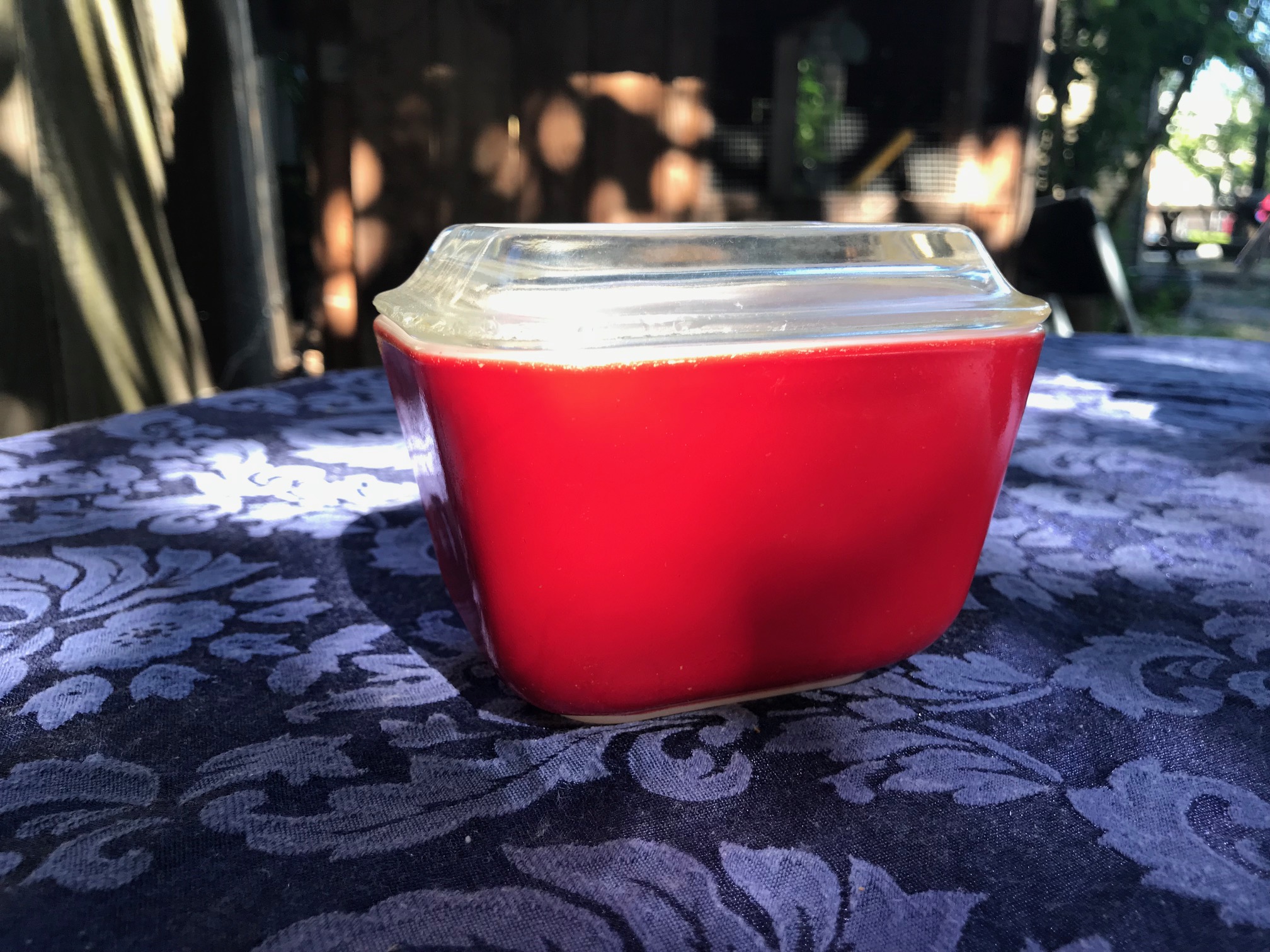
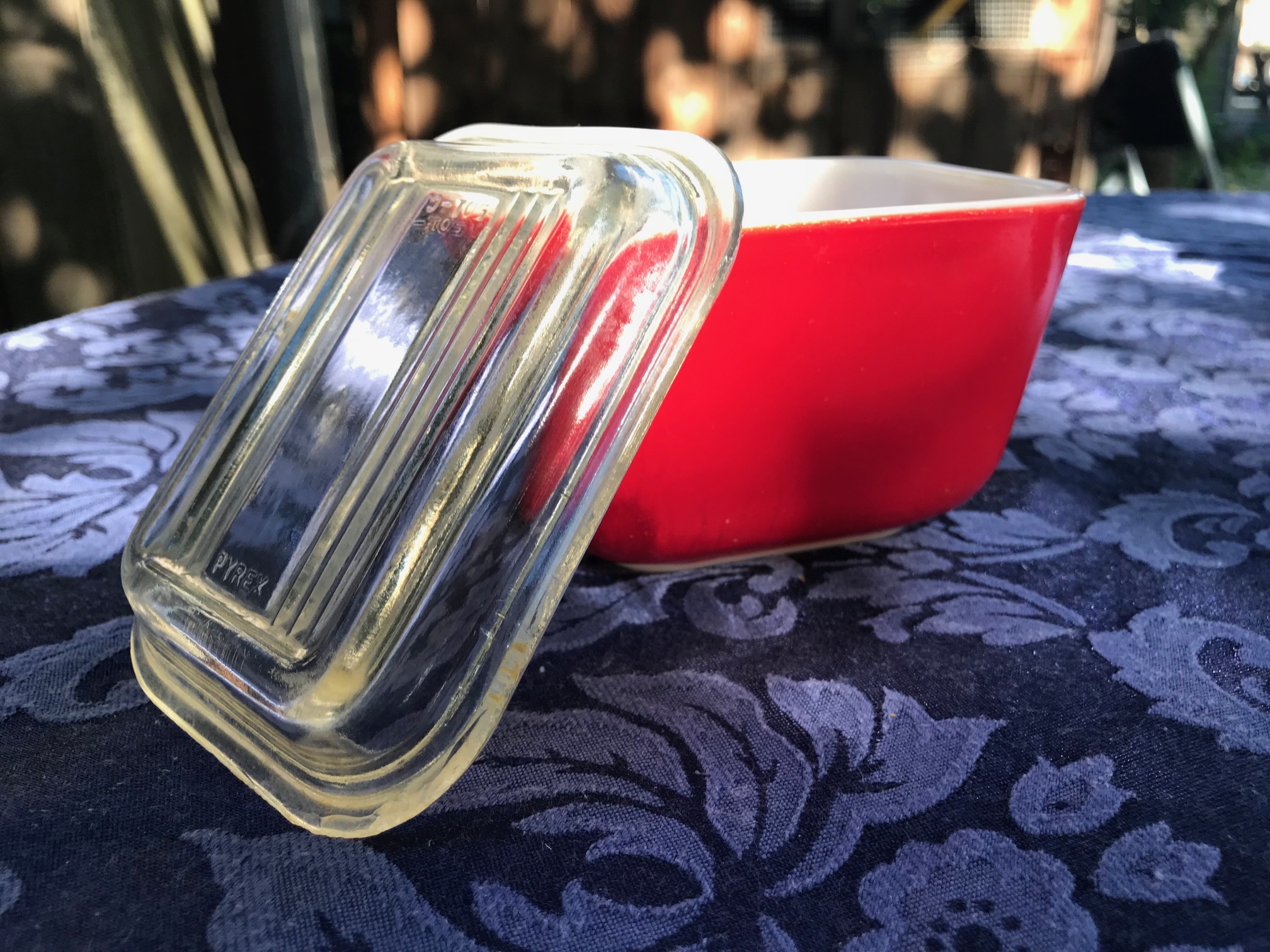
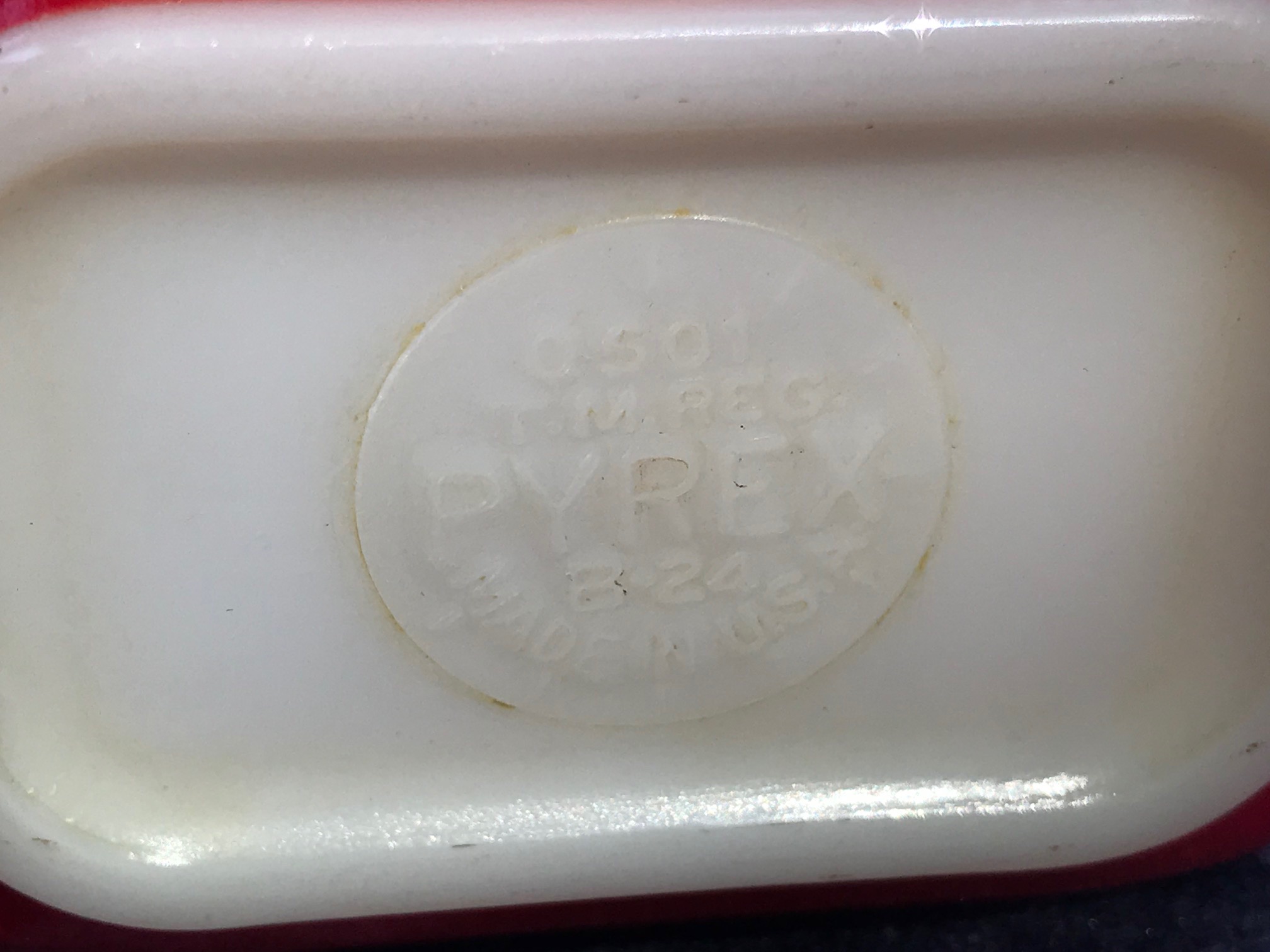
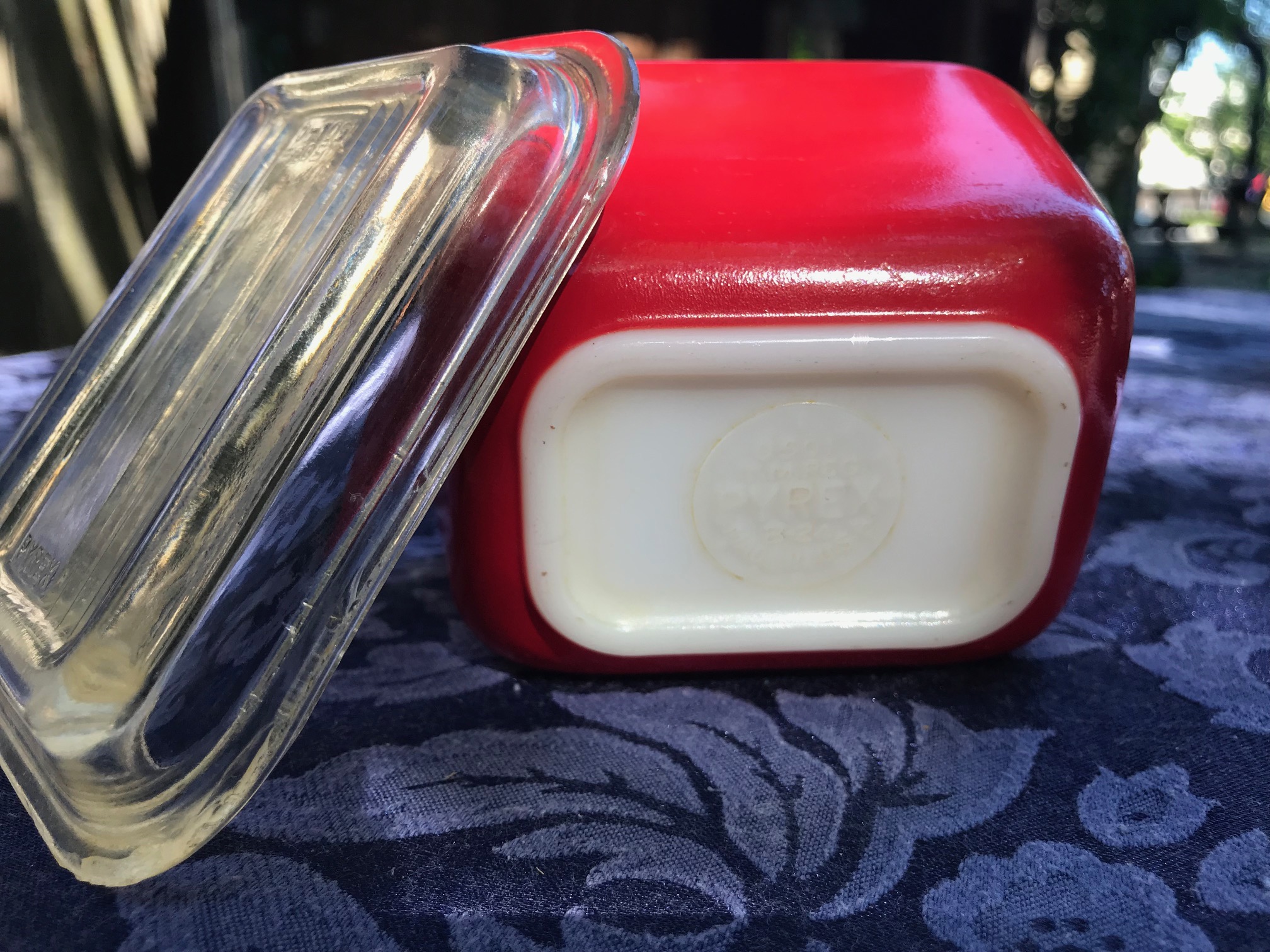
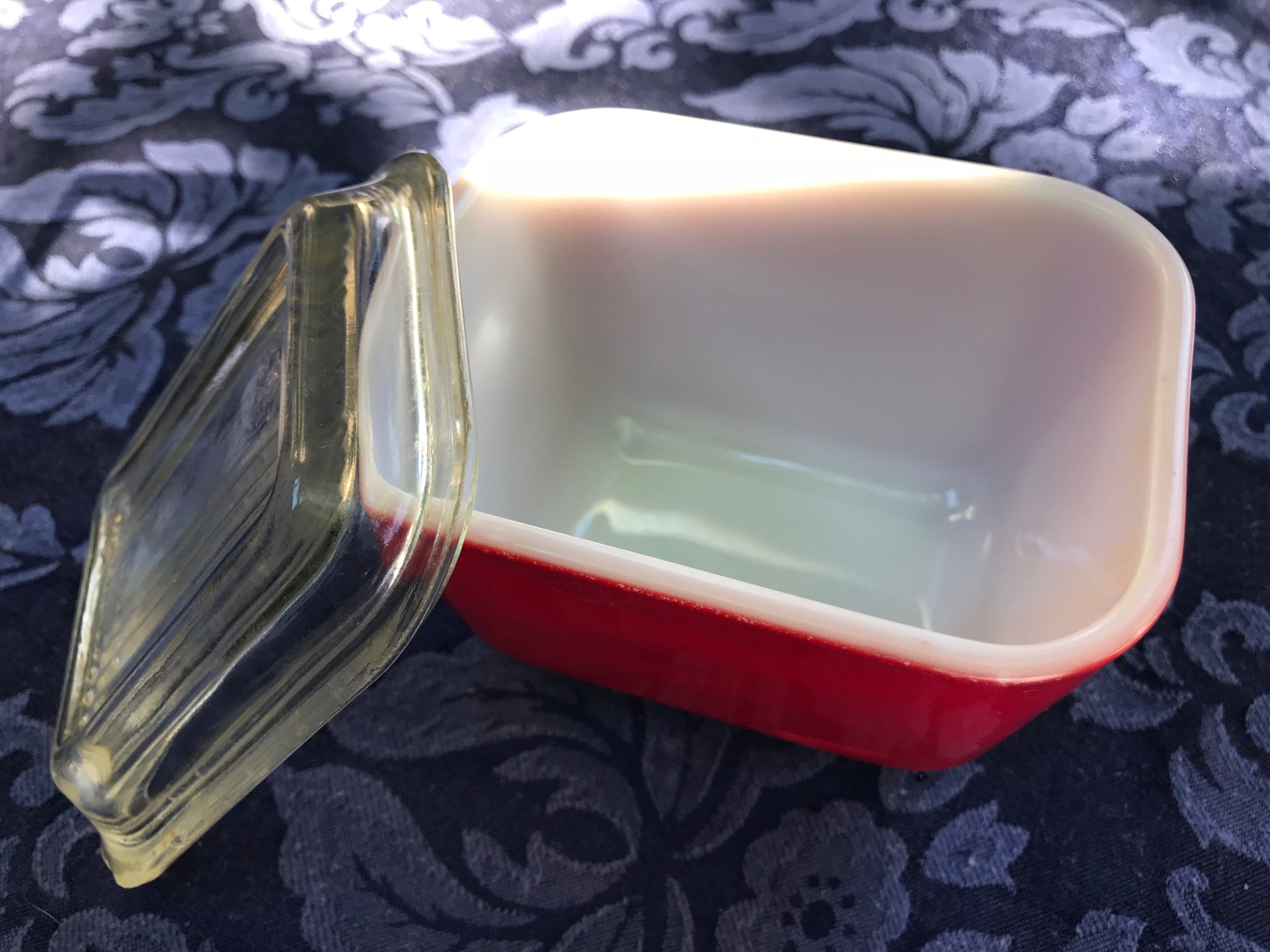

wow!
Well, this is disappointing. I have that exact red one and also a larger blue one. How about pyrex bowls? I have a large yellow one, part of a set of several different ones. Sentimental to me.
They are pretty much all high lead. Click through this link to see more that I have tested: https://tamararubin.com/category/leaded-pyrex/
Hi
Does anyone know if there’s lead in the casserole corningware from the ‘70?
Thx
Gail
Generally in the decorative patterns, yes. Look up “corningware” here on my site using the searchbar.
Tears…these are my favorites. Do you know if the lids have lead as well?
Hi Cheryl!
The clear lids? Hmmm – I have tested some of the clear vintage Pyrex and it has been positive, but I don’t recall if I specifically separately tested this lid. Here is an example: https://tamararubin.com/2019/01/made-in-usa-vintage-pyrex-clear-glass-double-boiler-cooking-pot-216-ppm-lead/
Tamara
Tamara
I have a whole set of red ones and turquoise ones that I inherited from my grandmother. I assume that I can not longer use them. I hate it because 3 generations have cherished them. How do you dispose of them?
What about the pink and white mixing bowl sets?
Hi Martha, the pink and white ones are also positive. Any of the vintage ones with painted decorations or painted solid colors on the outside are positive for high levels of lead. Here’s what I share with people who ask about what to do with them:https://tamararubin.com/2013/11/what-should-i-do-with-my-lead-contaminated-dishes-to-toss-or-not-to-toss/
Thanks for reading and thank you for commenting!
Tamara
First off, thanks for all your research!!
Second, do you still have the lid? Would it be possible to test it? I’ve been thinking about using the vintage lids with current dishes (no one seems to make stackable glass lids anymore ♀️). If not, if I sent one to you, would you be willing to test it? Thanks!
My mother still has her plate setting for eight that is white with the blue flowers. I was going to pass them on to me and I wanted to have and use them. Like she gave me her Pyrex stacking bowl from when they got married 56 years ago
Hi, Tamara! Could you please recommend Food storage container, if possible with the links. I’m too picky and can’t decide which one to buy. I have searched in your website, but, unfortunately, didn’t find the suggestions( Thank you for your tremendous work!:))))
Did you test the clear glass lids on these little Pyrex storage containers. Thanks. M
I have 2 of these that i will just throw out and not redonate 🙁 i am also a lover of all things vintage. Thank you for sharing your research.
I have a large 8-3/4″ diameter Pyrex White milk glass mixing bowl (#34 – perhaps made to go with Hamilton Beach mixers). It does not have any outer color on it. Do you know if they contain lead? I expect yes.
I know red paints of many kinds are more likely to contain lead, as well as Cadmium. Do you find particular colors are higher in lead?
In addition to above, do you know if the lead from the paint can leach into the milk glass interior? I know lead can leach through paint layers.